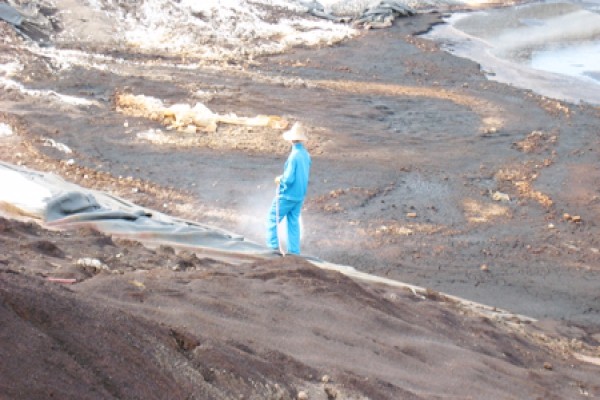How to recycle sewage for deodorization?
On the one hand, exhaust gas treatment is aimed at purifying exhaust gas and meeting the requirements of environmental protection. Converter refers to the process of converter blowing in the steelmaking industry. During the blowing process of the converter, a lot of high-temperature flue gas containing dust will occur, which contains a lot of carbon monoxide and is a fuel with high calorific value.
Regarding the characteristics of converter dust, the current collection methods include incineration method and non incineration method. The incineration method involves mixing the gas in the furnace with the inhaled air at the outlet and in the flue to produce high-temperature exhaust gas. The contained heat is used to generate electricity, which is then cooled and purified before being dispersed into the atmosphere.
The unburned method is to use adjustable equipment to adjust the smoke hood and exhaust system control (including methods to control micro positive pressure at the furnace nozzle and nitrogen seal, etc.), so that the smoke outlet does not come into contact with air (thus there is no incineration or very low incineration volume limit), and after cooling, it is purified and injected into the recovery system for storage and use. Compared with the incineration method, the non incineration method has advantages such as less smoke, lower temperature, smaller purification equipment volume, less land occupation, and less investment. Due to the fact that the gas inside the furnace is not incinerated, the dust particles are large and easy to purify.
The dry dust removal method is adopted in the waste gas treatment equipment using converter scrap steel, making it easy to separate and recover zinc containing dust. The power consumption of the dry dust removal system is only about half of that of the wet dust removal system, because the resistance loss of the temperature tube in the dry dust removal system is not significant. Plus the advantages of dry dust and water conservation.

In converter dust, there will be smoke and secondary smoke, which refers to the process of direct conversion by a fan. The pipeline and dust collector reuse circulating gas, rather than recovering the incineration gas through chimney smoke. The secondary fume hood refers to the active overflow, and the dust is the smoke from the secondary dust collector, which is discharged through the two dust.
For the above methods, there are actually other waste gas treatment methods that can be applied, which is a practical choice to choose suitable waste gas treatment equipment.
Other recycling methods for converter dust and sludge include the preparation of restored iron powder, modified water glass, desulfurizer, separation of iron from converter dust and sludge, production of sponge iron, preparation of iron oxide red, and removal of heavy metal ions from converter dust and sludge water. Combined with this, if the converter flue gas cannot be decomposed, recovered or reused, it will form serious secondary pollution. Therefore, finding an outstanding method of waste gas treatment equipment to effectively recover has great economic value for small fertilizer plants.
The article originates from a deodorant manufacturer http://www.scneng.com.hk
-
06-11
"Environmental Doctor" Du Siyuan: Environmental Protection is a Lifestyle Attitude
There is a Hong Kong compatriot in Jiangmen who often frequents various farms and plantations, walks in mechanical factories, and is seen by others as the nemesis of environmental problems. He conside
-
03-16
Deodorant manufacturer: Deodorants reduce soil pollution
Waste is a chaotic mixture of various components. The accumulation of debris on the surface of soil can cause some chemical reactions, releasing harmful gases, which can lead to soil pollution and eve
-
12-01
Deodorant Manufacturers: Differences between Microbial Deodorants and Traditional Deodorants
The waste that is not needed in our daily life and work is called waste. Due to the large amount of waste discharged and the complex categories, there are great difficulties in reducing waste and deod
-
11-08
Application of Deodorant Manufacturers in Domestic Waste Treatment
Garbage is the waste generated in everyone's daily life and work. Due to its large discharge volume and complex and diverse composition, it poses great difficulties in reducing and deodorizing wa
